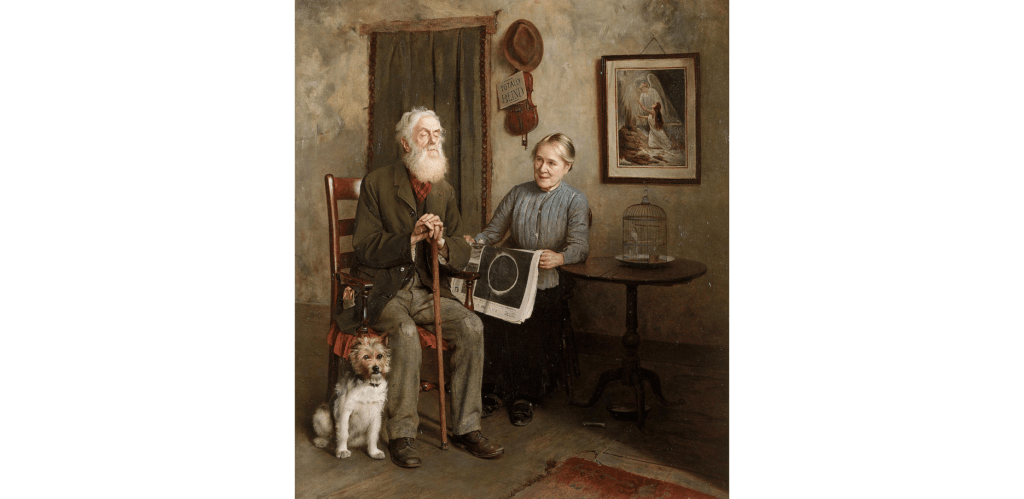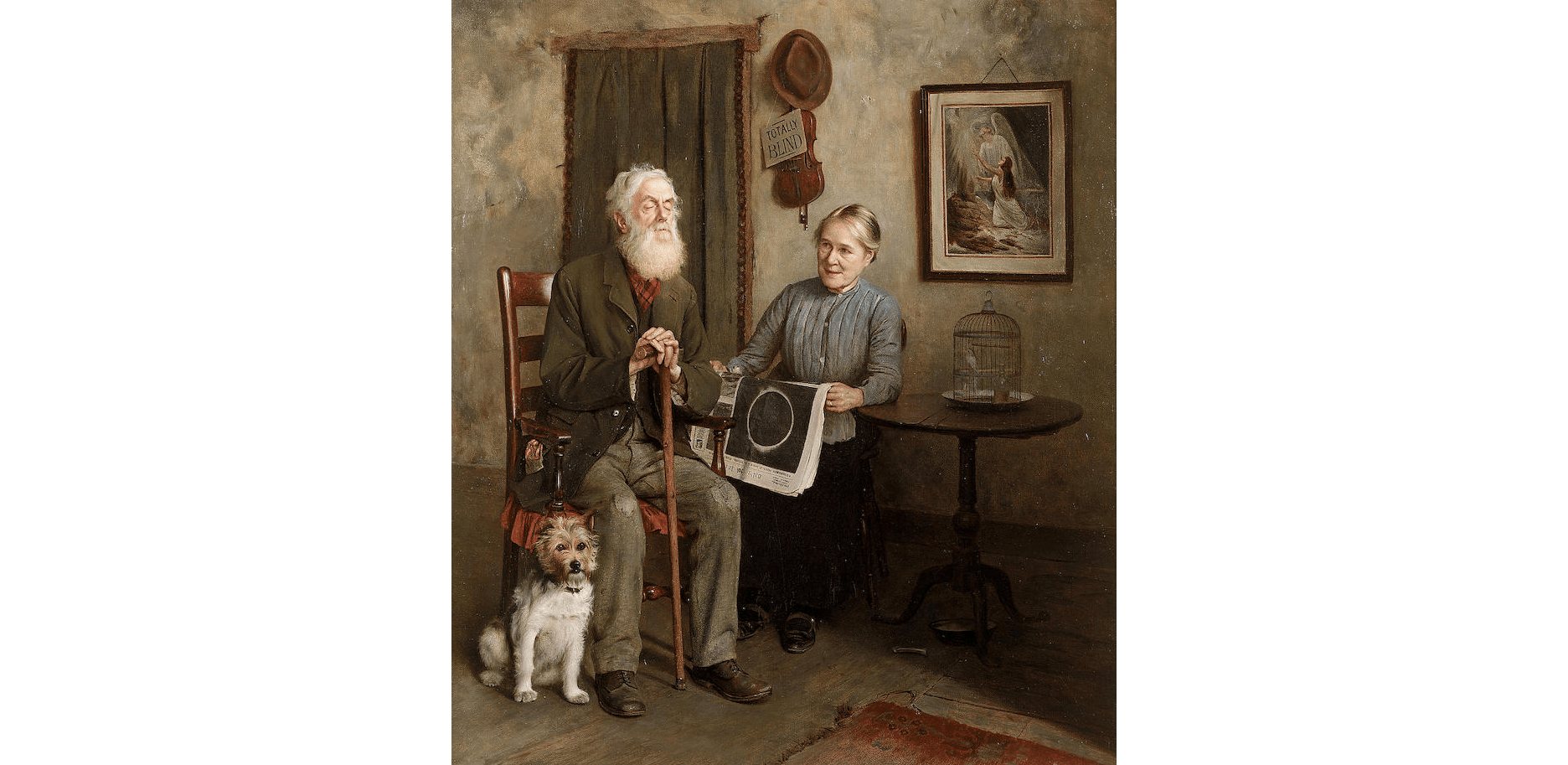“The Total Eclipse” is a painting by British artist Charles Spencelayh. It was completed in 1927

The eclipse itself is depicted in a realistic manner, with the sun partially obscured by the moon and the sky taking on a darker hue.
One notable aspect of the painting is the use of light and shadow. Spencelayh uses the natural light of the eclipse to illuminate his subjects, casting deep shadows on the ground and creating a sense of drama and mystery.
Overall, “The Total Eclipse” is a striking and beautifully rendered work of art that captures the wonder and awe of a rare astronomical event.
Charles Spencelayh was known for his highly realistic paintings, often depicting everyday objects and scenes with remarkable precision and attention to detail. “The Total Eclipse” is a departure from his usual subject matter, but it still showcases his skill at capturing the nuances of human emotion and the effects of light and shadow.
The painting is also notable for its historical significance. Solar eclipses have been observed and recorded throughout human history, and have often been interpreted as portents of doom or signs of divine intervention. Spencelayh’s painting captures this sense of wonder and reverence, as well as the sense of community that often arises when people come together to witness a rare event.
Today, of course, we have a much better understanding of the science behind solar eclipses, and they are no longer viewed as omens or miracles. However, they still hold a special fascination for many people, and Spencelayh’s painting serves as a beautiful and enduring tribute to the enduring mystery and beauty of the natural world.



